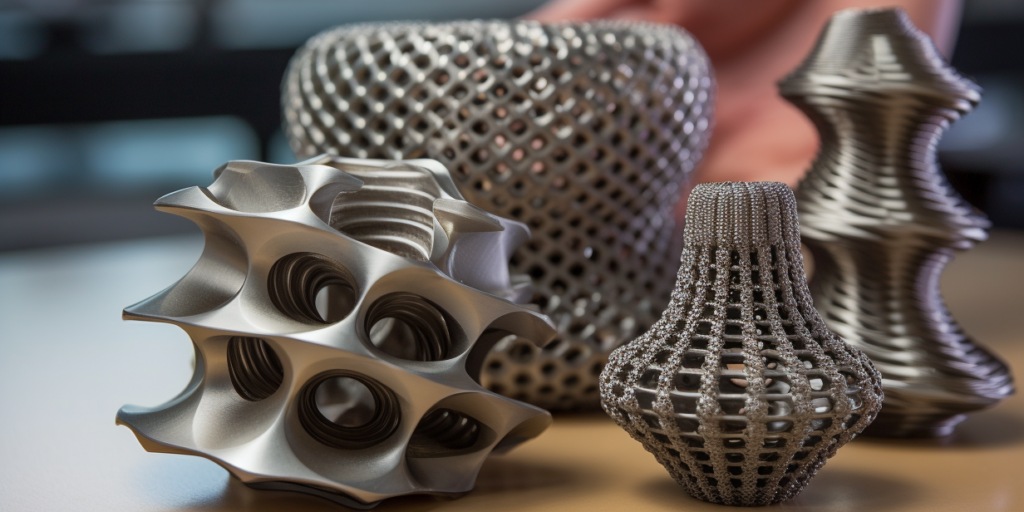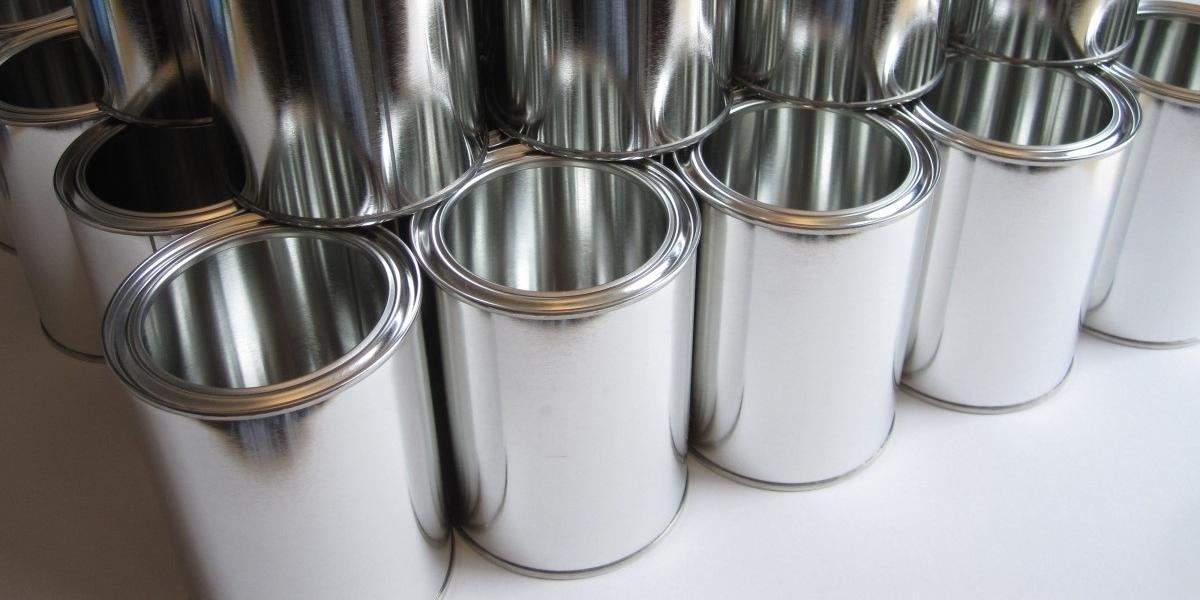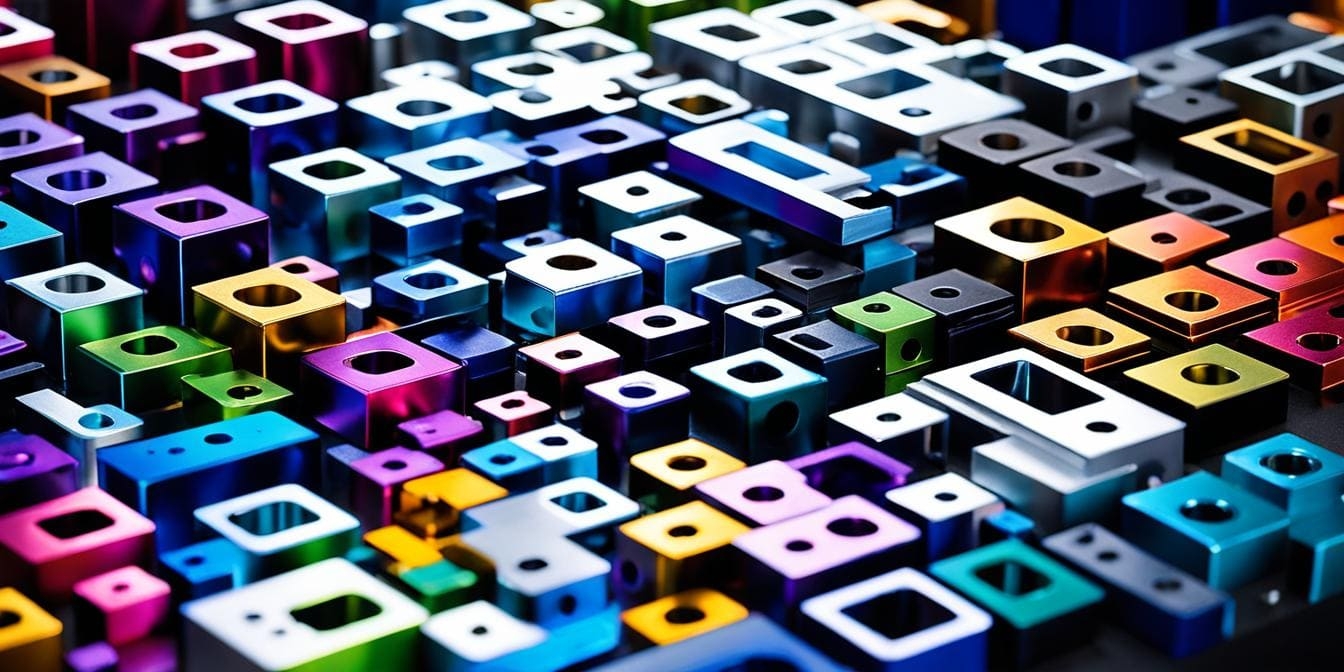
Ceramic is a remarkable material, harder than most metals, resistant to extreme temperatures, and chemically inert, making it indispensable across high-performance applications. Ceramic components are found in some of the most demanding environments, for example:
- Aerospace heat shields
- Semiconductor substrates
- Dental implants
- Precision mechanical seals
However, its exceptional hardness and brittleness also pose significant challenges in manufacturing. This is where ceramic CNC machining comes into play, enabling the precise fabrication of complex ceramic parts with tight tolerances using advanced computer-controlled equipment.
As industries increasingly rely on ceramics for their superior properties, CNC machining has become the key to unlocking their full potential in modern engineering.
Understanding Ceramics in CNC Machining
Ceramics are integral to high-performance manufacturing thanks to their extraordinary mechanical and thermal properties. When incorporated into CNC machining, they enable the creation of parts that must endure extreme stress, temperature, or chemical exposure.
Hardness
Ceramics are among the hardest materials used in manufacturing, often surpassing hardened steel in resistance to deformation and wear. This makes them ideal for applications that require long-term dimensional stability and minimal surface abrasion.
For example, alumina and silicon carbide are frequently used in cutting tools and wear-resistant components due to their extreme surface hardness. However, this same property requires the use of diamond-coated tools in CNC machining to achieve clean and precise cuts.
Brittleness
Despite their hardness, ceramics are inherently brittle, meaning they lack ductility and fail suddenly under tensile stress. This property arises from their atomic bonding structure, which limits the movement of dislocations within the material.
As a result, even small machining errors or impacts can lead to cracking or catastrophic failure. CNC processes must therefore be carefully controlled to avoid high tool pressure or vibration during material removal.
Thermal Stability
One of ceramics’ most valuable traits is their exceptional thermal stability—they can withstand temperatures above 1000°C (some types of ceramics) without degrading or deforming. This makes them well-suited for aerospace, energy, and electronic applications where thermal insulation and resistance are critical.
Unlike metals, ceramics do not experience significant thermal expansion, ensuring consistent performance even in fluctuating or extreme thermal environments. In CNC machining, this stability allows precise shaping without warping or loss of accuracy due to heat.
Different Types of Ceramics for CNC
Ceramic materials used in CNC machining span a broad spectrum, each offering distinct mechanical, thermal, or electrical properties tailored for specialized industrial applications.
From ultra-hard structural ceramics like silicon carbide to machinable options like Macor, these materials meet the rigorous demands of sectors such as aerospace, electronics, energy, and biomedical engineering.
1. Alumina (Al₂O₃)

Alumina, or aluminum oxide, is one of the most widely used technical ceramics due to its exceptional hardness, wear resistance, and electrical insulation properties. Available in various purity levels (commonly 96% to 99.8%), higher purity grades offer enhanced performance in demanding applications.
In CNC machining, alumina’s brittleness necessitates the use of diamond-coated tools and precise control over machining parameters. It’s commonly employed in electronic substrates, cutting tools, and biomedical components.
2. Zirconia (ZrO₂)

Zirconia, or zirconium dioxide, is renowned for its high fracture toughness, making it less prone to cracking under stress compared to other ceramics. Its excellent wear resistance and thermal insulation properties make it suitable for applications like dental implants, oxygen sensors, and fuel cell components.
CNC machining of zirconia requires careful handling to prevent micro-cracking. Stabilized forms, such as yttria-stabilized zirconia, are often used to enhance its mechanical properties.
3. Silicon Carbide (SiC)
Silicon carbide is characterized by its exceptional hardness, thermal conductivity, and resistance to chemical corrosion. These properties make it ideal for high-temperature applications, including semiconductor manufacturing, heat exchangers, and mechanical seals.
Due to its extreme hardness, CNC machining of SiC is challenging and typically involves the use of diamond tools and specialized equipment. Its brittleness requires precise control over machining parameters to avoid damage.
4. Aluminum Nitride (AlN)
Aluminum nitride offers a unique combination of high thermal conductivity and electrical insulation, making it suitable for electronic substrates and heat sinks. Its low thermal expansion coefficient ensures dimensional stability under thermal cycling.
Machining AlN requires diamond tooling and careful parameter optimization to prevent chipping and achieve the desired surface finish.
5. Boron Nitride (BN)
Boron nitride exists in various forms, with hexagonal boron nitride (h-BN) being the most common. It exhibits excellent thermal conductivity, chemical inertness, and lubricating properties.
In CNC machining, h-BN’s lubricating nature reduces tool wear, but its softness compared to other ceramics necessitates careful handling to maintain dimensional accuracy.
6. Macor (Machinable Glass Ceramic)
Macor is a machinable glass ceramic composed of fluorophlogopite mica in a borosilicate glass matrix. It can be machined using standard metalworking tools, eliminating the need for diamond tooling.
Macor’s ease of machining makes it ideal for prototyping and applications requiring complex geometries, such as vacuum components and insulating parts.
7. Silicon Nitride (Si₃N₄)
Silicon nitride is known for its high strength, fracture toughness, and thermal shock resistance. These properties make it suitable for applications like engine components, bearings, and cutting tools.
CNC machining of Si₃N₄ is challenging due to its hardness and brittleness, requiring the use of diamond tools and precise control over machining parameters.
8. Mullite (3Al₂O₃·2SiO₂)
Mullite is a silicate ceramic known for its excellent thermal stability, low thermal expansion, and resistance to chemical corrosion. It’s commonly used in refractory linings, kiln furniture, and thermal insulation.
Machining mullite requires diamond tooling and careful parameter optimization to prevent micro-cracking and achieve the desired surface finish.
9. Cordierite (2MgO·2Al₂O₃·5SiO₂)
Cordierite is valued for its low thermal expansion and high thermal shock resistance. These properties make it ideal for applications like catalytic converter substrates and kiln furniture.
Due to its brittleness, CNC machining of cordierite necessitates the use of diamond tools and meticulous control over machining conditions.
10. Steatite (Mg₃Si₄O₁₀(OH)₂)
Steatite, a magnesium silicate ceramic, offers good electrical insulation and moderate mechanical strength. It’s commonly used in electrical insulators and heating elements.
Machining steatite is relatively easier compared to other ceramics, but still requires appropriate tooling and parameter control to achieve precision.
11. Silicon Oxynitride (SiAlON)
SiAlON ceramics are derived from silicon nitride and offer enhanced thermal and mechanical properties. They exhibit high strength, thermal shock resistance, and chemical stability, making them suitable for applications like molten metal handling and cutting tools.
CNC machining of SiAlON requires diamond tooling and precise control over machining parameters to maintain structural integrity.
12. Zirconium Carbide (ZrC)
Zirconium carbide is an ultra-high-temperature ceramic with excellent hardness and thermal conductivity. It’s used in applications like cutting tools, nuclear reactors, and aerospace components.
Due to its extreme hardness, CNC machining of ZrC is challenging and necessitates the use of diamond tools and specialized equipment.
13. Titanium Carbide (TiC)
Titanium carbide is known for its high hardness and wear resistance. It’s commonly used in cutting tools, wear-resistant coatings, and cermet materials.
CNC machining of TiC requires diamond tooling and careful parameter optimization to prevent tool wear and achieve the desired surface finish.
14. Glass Ceramics
Glass ceramics are materials that exhibit both glassy and crystalline properties, offering high strength, thermal stability, and low thermal expansion. They’re used in applications like cooktops, telescope mirrors, and electronic substrates.
Machining glass ceramics requires diamond tooling and precise control over machining parameters to prevent chipping and achieve high-quality surfaces.
15. Polymer-Derived Ceramics (PDCs)
PDCs are synthesized by pyrolyzing preceramic polymers, resulting in ceramics like silicon carbide, silicon nitride, and silicon oxycarbide. They offer design flexibility and are used in applications requiring complex shapes and high-temperature stability.
CNC machining of PDCs depends on the specific ceramic phase and requires appropriate tooling and parameter control to achieve precision.
The Ceramic CNC Machining Processes
Ceramic CNC machining involves a precise and controlled workflow. The process can vary based on whether the ceramic is in a green (pre-sintered) or fully sintered state, but the steps outlined below represent a stable and commonly adopted path for achieving high-quality ceramic components.
Step 1: Material Selection
The process begins with selecting the appropriate ceramic material based on the application’s performance requirements – be it thermal conductivity, dielectric strength, wear resistance, or machinability.
Engineers also determine whether the ceramic will be machined in its green or sintered state. In green machining, ceramic powders are shaped and compacted with binders to form a dense, yet workable, structure. For sintered materials, high-quality ceramic blanks are sourced and pre-processed as needed.
Preparation may also include drying, rough cutting, or sizing the blank to fit the machining fixtures. Special attention is paid to internal stresses and dimensional allowances, especially when sintering shrinkage will follow.
Step 2: Machine Setup
Because ceramics are brittle and unforgiving under force, precise fixturing is essential. Workpieces are secured using vacuum chucks, soft jaws, or custom fixtures designed to distribute pressure evenly and avoid point-loading. The CNC machine itself is calibrated for rigidity and minimal vibration.
Tooling is another critical consideration. Depending on the material, polycrystalline diamond (PCD), cubic boron nitride (CBN), or diamond-coated tools are selected to endure the abrasiveness of ceramics. Cutting paths and strategies are carefully programmed to prevent thermal shock and mechanical stress, often with reduced feed rates and shallow depth of cuts.
Step 3: Rough Machining
If green machining is used, the rough machining step removes the majority of the excess material while maintaining a buffer for shrinkage during sintering. The ceramic in this state machines like a hard wax, allowing greater freedom in tool paths, deeper cuts, and faster speeds.
In fully sintered ceramics, rough machining is far more delicate. It typically involves light passes with abrasive tools or grinding wheels, as traditional cutting tools would fail. The primary objective at this stage is to define the general geometry and remove bulk material without inducing micro-cracks or surface damage.
Step 4: Fine Machining
Once the basic geometry is achieved, fine machining is employed to reach final tolerances, often in the micron range. This phase uses ultra-precise CNC control, stable spindle speeds, and minimal tool pressure. For green parts, this step is done just before sintering to ensure dimensional conformity.
Step 5: Surface Refinement
When working with sintered ceramics, finishing is typically performed with diamond grinding, laser-assisted machining, or ultrasonic machining, depending on the material and complexity. These processes allow for the refinement of features such as threads, holes, or micro-channels while preserving surface integrity.
Step 6: Sintering (If Green Machining Was Used)
For components machined in their green state, sintering is a critical post-processing step. During sintering, the machined part is heated to high temperatures (often above 1600°C), allowing ceramic particles to bond and densify into their final crystalline structure.
The process causes predictable dimensional shrinkage, commonly between 15–25%, which is factored into the earlier machining stage. Proper control of the sintering cycle ensures that the final part retains its designed tolerances and material properties without warping or cracking.
Step 7: Post-Machining
After final shaping, additional surface finishing processes may be applied depending on the part’s functional requirements. These include polishing, lapping, honing, or coating to enhance aesthetics, reduce friction, or improve thermal performance.
In high-tech applications, post-machining may also involve dimensional inspection, ultrasonic flaw detection, or SEM imaging to verify surface quality and structural soundness. This step ensures that the ceramic component meets all performance and reliability standards before shipment or assembly.
Applications of Ceramic CNC Machining
Technical ceramics have carved out a crucial role in many high-precision and high-performance industries. When shaped through CNC machining, these materials enable the production of components that would otherwise be impossible to fabricate with metals or polymers.
Let’s explore some of the key sectors and applications where ceramic CNC machining excels.
Aerospace and Defense
Ceramics are widely used in aerospace and defense systems due to their ability to withstand extreme temperatures, corrosive environments, and high mechanical stress. CNC-machined ceramic parts are found in components like:
- thermal insulation tiles
- engine seals
- fuel injector components
- high-temperature sensors
Their low density combined with excellent wear resistance makes them ideal for weight-sensitive, mission-critical applications.
Semiconductor and Electronics

Ceramics like alumina, aluminum nitride, and zirconia are indispensable in semiconductor processing equipment. Their superior dielectric strength and thermal conductivity support applications in:
- circuit substrates
- high-frequency insulators
- vacuum chambers
CNC machining ensures these parts meet tight tolerances and are free of surface defects, crucial for minimizing contamination in chip fabrication.
Medical and Dental Devices
In the medical field, biocompatible ceramics such as zirconia and alumina are machined into components like dental implants, surgical instruments, and prosthetic joints.
CNC machining offers the precision needed to match patient-specific geometries and ensure long-term reliability.
These materials are not only bioinert but also resistant to wear and sterilization procedures, making them ideal for use in the human body.
Industrial Machinery and Tooling
Ceramic tooling is favored in environments where traditional metal tools fail due to heat, abrasion, or chemical exposure. CNC-machined ceramics are commonly used in cutting tools, wear pads, pump components, and nozzles. These parts often outlast their metal counterparts, improving productivity and reducing maintenance downtime in high-volume manufacturing.
Energy and Power Systems
Ceramics are increasingly applied in renewable energy systems and high-voltage environments. CNC machining allows the precise fabrication of ceramic insulators, bushings, fuel cell components, and turbine parts.
Their ability to maintain stability under high voltage, corrosive media, or thermal cycling makes them essential in power distribution, nuclear systems, and advanced battery designs.
Optical and Scientific Equipment
Many laboratories and research facilities depend on CNC-machined ceramics for components in optical benches, microscopes, and vacuum systems. Materials like Macor and silicon carbide provide dimensional stability and low thermal expansion, which is crucial for experiments requiring absolute precision.
In each of these applications, CNC machining plays a pivotal role in unlocking the full potential of ceramics. The ability to shape such hard and brittle materials with high precision opens up a wide range of possibilities for advanced engineering and innovation.
10 Common CNC Machining Ceramics Guidelines
Due to the unique characteristics of ceramics, such as extreme hardness and brittleness, machining these materials requires specialized strategies and strict control over processing parameters. Whether working with green bodies or fully sintered ceramics, the following 10 common guidelines can help ensure optimal results in CNC machining operations:
- Select the Right Ceramic Type: Choose ceramic materials based on their mechanical, thermal, or electrical properties in relation to the part’s intended function.
- Prefer Green Machining When Possible: Machining ceramics in their unsintered (green) state is easier and less tool-intensive. Plan for shrinkage after sintering (typically 15–25%).
- Use Diamond or CBN Tools: Due to their extreme hardness, sintered ceramics require superabrasive tools like polycrystalline diamond (PCD) or cubic boron nitride (CBN) for effective cutting.
- Apply Low Cutting Speeds and Feed Rates: Minimize tool pressure and heat buildup to avoid inducing cracks. Shallow passes and slow feeds are essential for maintaining part integrity.
- Avoid Sharp Corners in Design: Use rounded internal features and fillets to reduce stress concentrations and prevent fractures during machining or in end-use.
- Use Rigid, Vibration-Free Setups: Vibrations can cause microcracks or catastrophic failure in brittle ceramics. Employ stiff tooling, stable fixtures, and balanced tool paths.
- Control Temperature Gradients: Ceramics are sensitive to thermal shock. Use coolants sparingly, and avoid sudden temperature changes, especially in sintered machining.
- Ensure Uniform Clamping Pressure: Uneven or excessive clamping can crack ceramic parts. Use soft jaws, vacuum chucks, or compliant fixturing materials to distribute pressure evenly.
- Incorporate Post-Machining Inspection: Use visual and non-destructive testing methods to detect internal flaws, chipping, or dimension deviation before the part enters use.
- Plan for Secondary Finishing: Many ceramic parts require lapping, polishing, or surface treatments to achieve the required tolerances and surface quality.
While the margin for error is narrow, careful planning and precise execution lead to consistent, high-quality ceramic components that meet the stringent demands of modern applications.
Partnering With Xmake
Xmake offers professional ceramic CNC machining services with a fast, hassle-free online quote system and no minimum order requirements. With expertise in handling various ceramic types, Xmake ensures high-precision results for both prototyping and production needs.
FAQs
1. What materials cannot be CNC machined?
Materials that are too soft (like certain rubbers or foams), highly elastic, or extremely brittle in unpredictable ways (such as some glass composites) are not suitable for conventional CNC machining.
Additionally, materials with inconsistent structural integrity or extremely high hardness beyond the tool’s capacity may also be excluded.
2. Is CNC machining cheaper than 3D printing?
CNC machining is generally more cost-effective for low to medium-volume production of parts with tight tolerances and high material performance.
However, 3D printing may offer lower upfront costs and greater flexibility for complex geometries or prototyping, especially in early development stages.





